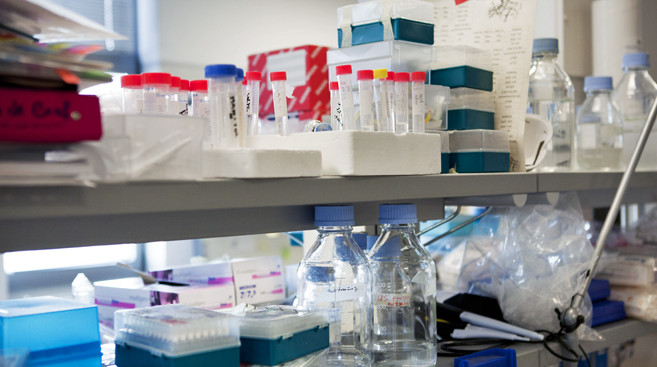Learning and memory deficiencies are correlated to alterations in sleep and wake cycles. This is the outcome of an animal model study conducted on a genetic form of mental retardation and published on Nature Neuroscience* by Maria Passafaro, a researcher of the Istituto Telethon Dulbecco and employed in Milan’s Institute of Neuroscience of the NRC, the National Research Council.

«Our cognitive capacities are conditioned by circadian cycles, namely a sort of molecular clockwork inside our organism» Passafaro explains. «The hands of the clock are regulated by particular genes whose activity ranges over the 24 hours, thus plotting alternate sleep and wake cycles over the day. This study shows for the first time the existence of a correlation between a genetic form of X-linked mental retardation and the slowing down of the rate of variation of “clockwork genes”».
Mental retardation is estimated to affect 3% of the population, generally setting in during infancy or adolescence and displaying problems in the individual’s cognitive functions, language skills and social relations. Underlying this condition there might be a faulty formation and functioning of the synapses, the points of contact and communication between nerve cells. There are also genetic forms of mental retardation that are due to genetic defects present on the X chromosome: one of these is the OPHN-1 gene, which is precisely involved in the synaptogenetic process. «Studying and diagnosing this type of pathology is rather challenging because of the complexity and heterogeneity of its manifestation in different individuals: that’s what makes it so important to study the mechanisms that underlie it» Passafaro goes on to explain.
In order to pursue their goal, Telethon researchers, in collaboration with Carlo Sala of the NRC’s Institute of Neuroscience and Pierre Billuart of the National Institute for Health and Medical Research in Paris, used a laboratory mouse model of the disorder in which the OPHN1 gene is inactive. On analyzing the behavior of the mice, they realized that these animals showed a dysfunction in the sleep-wake cycle regulation so they consequently tried to understand if there was an interaction between the OPHN1 gene and the genes regulating circadian rhythms.
«For the very first time – Passafaro explains – we have shown that a protein dedicated to synaptogenesis regulates “clockwork” genes. In the mouse model of X-linked mental retardation, it is possible to notice a slowing down in the rhythm regulated by these genes. This phenomenon can be particularly detected in the area of the brain – the hippocampus – which is dedicated to learning and memory. This suggests that, during the first phases of development, the loss of the OPHN1 gene and the consequent alteration of circadian rhythms can have repercussions on the individual’s cognitive capacities».
What comes next? First of all, we must discover other genes similar to the “clockwork” genes involved in all the forms of X-linked mental retardation, but that’s not all. In parallel, researchers will have to single out mechanisms – and consequently drugs – capable of improving symptoms in the laboratory model, in the hope of possibly transposing these results onto patients in the future.
*P. Valnegri, M. Khelfaoui, O. Dorseuil, S. Bassani, C. Lagneaux, A. Gianfelice, R. Benfante, J. Chelly , P. Billuart, C. Sala, M. Passafaro, “A circadian clock in hippocampus is regulated by interaction ”. Nature Neuroscience, 2011.between oligophrenin-1 and Rev-erb For information:Telethon Press Office: Filippo degli Uberti, [email protected] – 06 44015314; Anna Maria Zaccheddu, [email protected] – 06 44015402